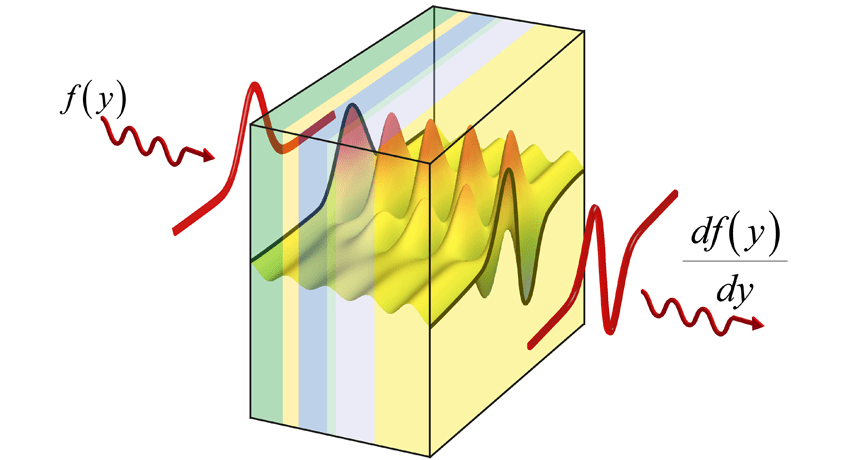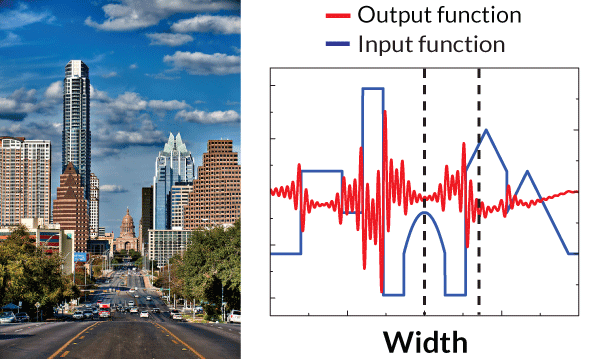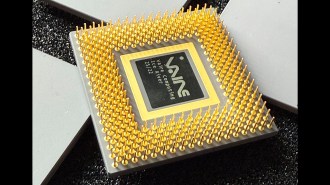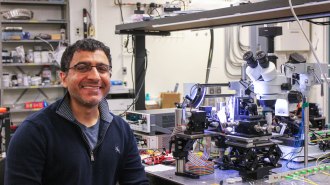
LIGHT MATH A new simulation shows that a light wave (red squiggle, left) entering into a specially designed structure (cube) can be transformed into the original light wave’s derivative (right), a common computation in calculus.
A. Silva/Univ. of Pennsylvania
- More than 2 years ago
Tiny structures that use light waves to perform ultrafast complex mathematical operations could be built from available materials, a new computer simulation suggests.
The study could soon lead to new metamaterials, human-made materials that manipulate light in surprising ways. In previous experiments, scientists have used metamaterials to create invisibility cloaks that bend light waves around objects (SN 8/27/11, p. 16). Nader Engheta, an electrical engineer at the University of Pennsylvania in Philadelphia, took metamaterials in a new direction in 2012, when he and colleagues made circuit elements that process light waves the way resistors and capacitors process electric currents. Such elements could be far smaller and faster than current electrical circuit parts.
In the new study, Engheta and colleagues designed materials to use light to do more sophisticated calculations, mathematical operations familiar to anyone who has studied calculus. The researchers’ goal was to design a structure that would predictably transform an incoming light wave’s shape. In one such computation, the exiting wave would have the shape of the incoming wave’s slope, also known as its derivative.
To show how to perform this mathematical wizardry, the researchers built a computer simulation of a structure made of alternating blocks a few micrometers thick of pure silicon and of zinc oxide that contained small amounts of aluminum.

The scientists chose the materials because of how they interact with infrared light. In their simulations, the researchers varied the widths of the blocks and stacked layers of the structures with different amounts of space between them. They then studied how an infrared light wave changed as it interacted with the materials. The scientists report in the Jan. 10 Science that they could precisely control the shape of the outgoing wave.
Structures like those the team simulated could recognize patterns in images hundreds or even thousands of times faster than the current state-of-the-art technology, Engheta says. In their simulation, the researchers demonstrate this potential by sending through their material a light wave with the shape of the Austin, Texas, skyline. The output is a light wave with sharp spikes where the buildings’ edges appear in the original image.
The new study is “a very appealing demonstration of using metamaterials in analog computation,” says Massimiliano Di Ventra, a physicist at the University of California, San Diego. A typical computer, which performs digital calculations, would encode a wave as 0s and 1s before doing an operation. Engheta’s approach could do the computation much faster by skipping that step. But Di Ventra adds that such technology will complement rather than replace digital logic.
Engheta says that within the next six months, his team will start to build the structures in the simulations.







